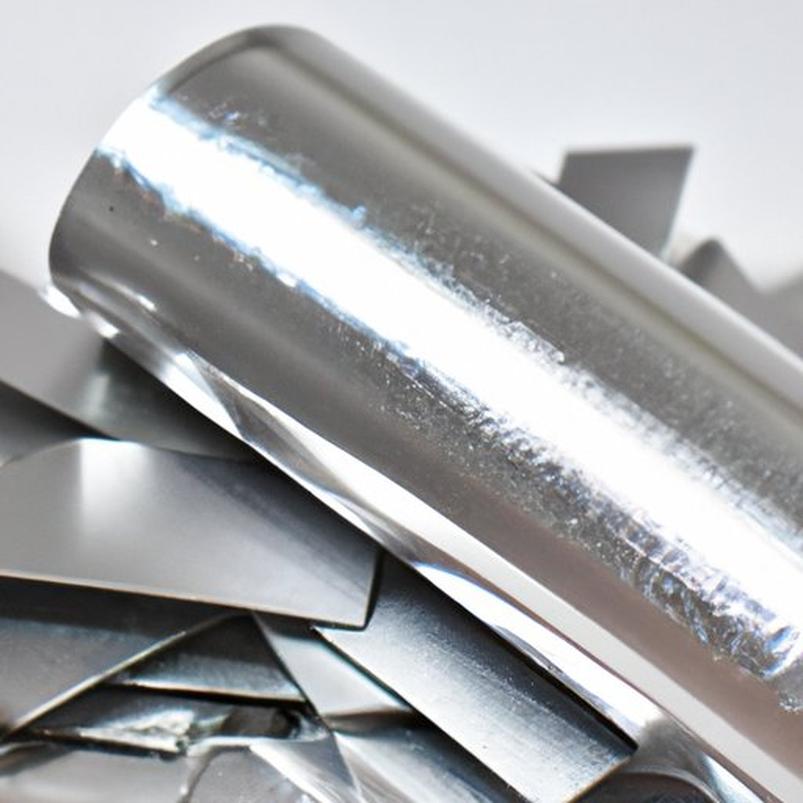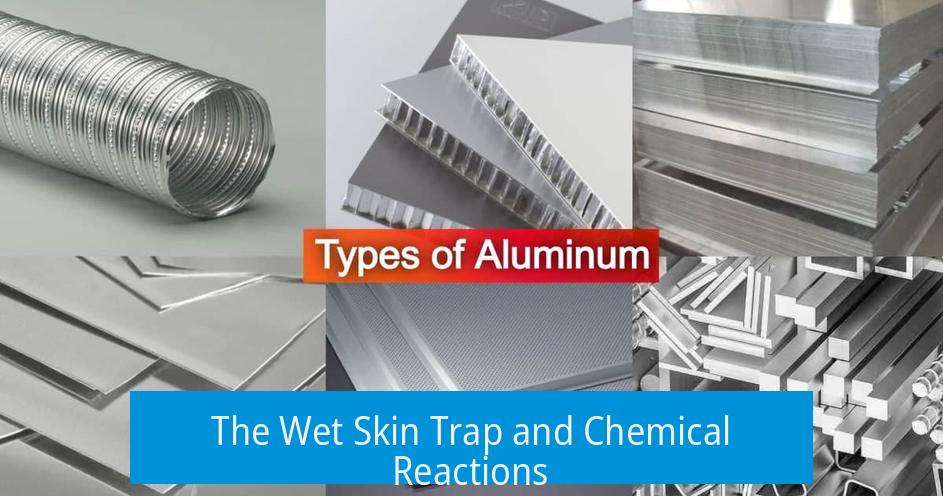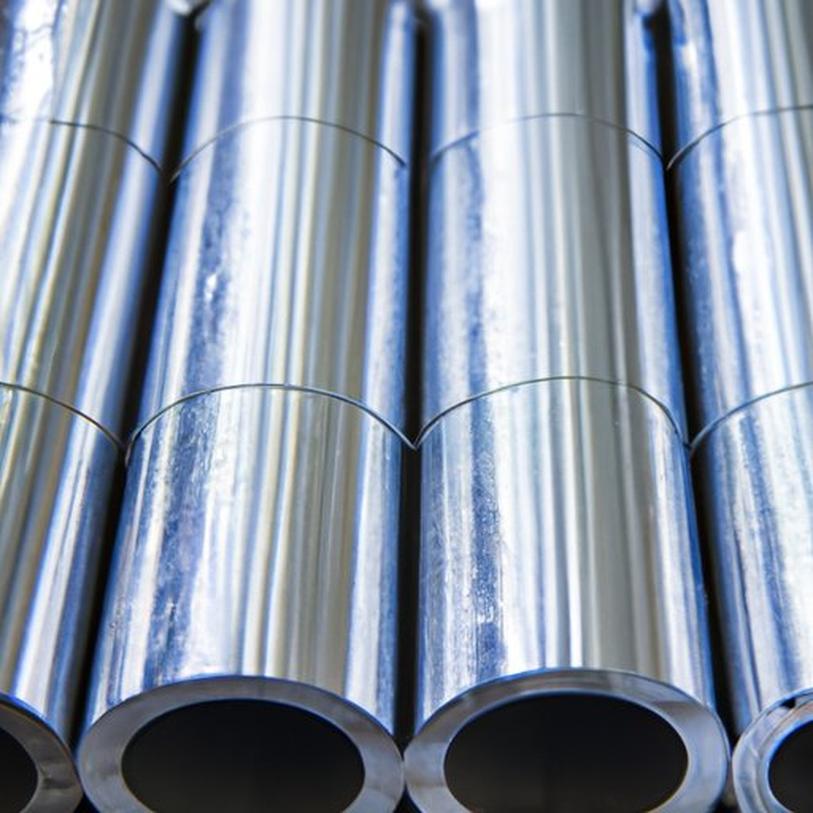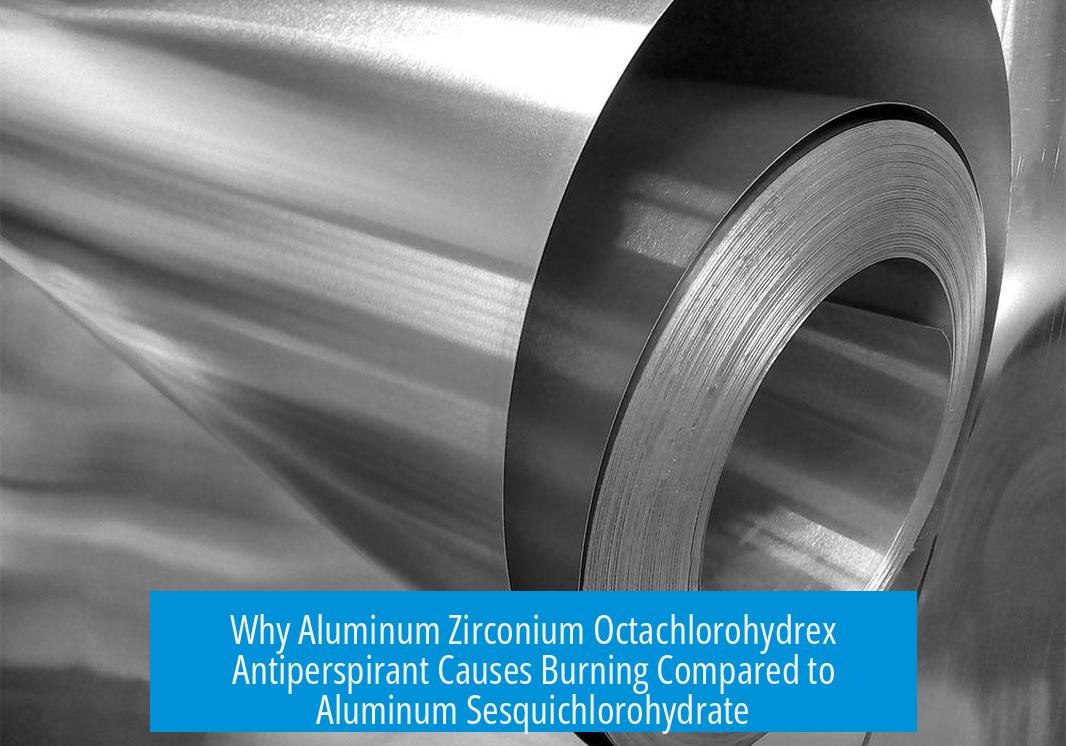Why Does Aluminum Zirconium Octachlorohydrex Antiperspirant Cause Burning While Aluminum Sesquichlorohydrate Does Not?

The burning sensation often arises from the inactive ingredients and application conditions, not the aluminum-based active compounds themselves. Aluminum zirconium octachlorohydrex and aluminum sesquichlorohydrate are both effective antiperspirant actives, but differences in formulation and usage explain why one might cause burning and the other might not.
Inactive Ingredients and Skin Irritation
Inactive components like alcohol frequently cause skin irritation. Alcohol acts as an astringent, which can sting freshly shaved or damaged skin. The formulation containing aluminum zirconium octachlorohydrex often includes more alcohol or other irritants compared to aluminum sesquichlorohydrate products. This difference can lead to a burning feeling upon application.
Reaction with Moisture on Skin
Both aluminum zirconium octachlorohydrex and aluminum sesquichlorohydrate, as aluminum chlorides and hydrates, potentially generate small amounts of hydrochloric acid (HCl) when in contact with water. Applying these antiperspirants on wet skin, especially just after showering or shaving, can increase acidity and cause irritation. The risk increases if the formulation’s pH or buffering capacity differs, making some products harsher under similar conditions.
Skin Sensitivity and Allergic Reactions
Some individuals have heightened skin sensitivity or allergies to specific ingredients other than the active aluminum compound. This can make aluminum zirconium octachlorohydrex-based antiperspirants uncomfortable, while aluminum sesquichlorohydrate may be tolerated better. Sensitivities can stem from fragrances, preservatives, or other solvents included in the product.
Variability of Formulations

User experiences confirm that different antiperspirant formulations yield different skin reactions. For example, aerosol sprays containing certain aluminum compounds may cause a burning sensation, whereas cream or roll-on forms with similar aluminum actives but fewer irritants often do not. This shows that the overall ingredient combination and delivery method influence irritation, not just the Aluminum active agent.
Summary of Causes for Burning Sensation
- Burning is mainly caused by inactive ingredients like alcohol, not aluminum compounds.
- Contact with wet or freshly shaved skin increases irritation due to HCl formation.
- Individual skin sensitivity or allergies contribute to discomfort.
- Variations in product formulation and delivery also affect irritation potential.
What About Using an Aluminum Zirconium Octachlorohydrex Antiperspirant Could Cause Burning Upon Contact, Whereas an Aluminum Sesquichlorohydrate Product Does Not?
Antiperspirants are a daily staple for millions, but have you ever wondered why some leave your skin feeling like it met a tiny firestorm, especially if you switch brands? If you’ve experienced a burning sensation with an aluminum zirconium octachlorohydrex antiperspirant, but not with an aluminum sesquichlorohydrate one, you’re not alone. The question sparks curiosity and discomfort equally—why do these similar products behave so differently on skin?
The short answer: It’s mostly the inactive ingredients and how the product is used, not the aluminum compound itself, that can cause that infamous burning feeling. Let’s unpack this sweaty mystery step by step.
Inactive Ingredients: More Impact Than You Might Think
It’s easy to blame aluminum compounds for skin burning because they sound complex and chemical-packed. However, experts concur that inactive ingredients — especially alcohol — are often the real culprits. Alcohol is common in antiperspirants for its quick-drying properties and its role as a carrier for active ingredients.
Here’s the kicker: if you’ve freshly shaved, that alcohol can be downright brutal, stinging the tiny nicks and sensitive hair follicles left behind. So even if both products have aluminum-based actives, their difference in other ingredients like alcohol concentration and type influences how your skin reacts.
In essence, the aluminum zirconium octachlorohydrex variety might have a higher alcohol content or different skin irritants lurking in its formula compared to the aluminum sesquichlorohydrate one. That explains why you might get that zingy burn with one but not the other.
The Wet Skin Trap and Chemical Reactions

Ever noticed that label warning—“do not apply on wet skin”? There’s a reason for that beyond just marketing paranoia.
When you apply antiperspirants containing aluminum chlorides and hydrates on damp skin, the chemicals can react with water. This reaction can form tiny amounts of hydrochloric acid (HCl), which is what causes the burning and irritation.
The aluminum zirconium octachlorohydrex formulation might provoke more of this acid formation if its chemistry favors that reaction—or if the product’s formulation leads you to apply more heavily on wet skin. In contrast, the aluminum sesquichlorohydrate product could have a gentler formula or better buffering agents that reduce this reaction and consequent irritation.
Individual Skin Sensitivity: The Wild Card in the Deck
The human body is unpredictable. Some people have skin that waves a “Welcome” flag to all ingredients, while others have a dozen alarm bells ringing.
Burning might not indicate that the aluminum zirconium octachlorohydrex antiperspirant is inherently bad. Instead, it may be that your skin is sensitive or allergic to certain ingredients exclusive to that formula. For example, preservatives, fragrances, or different alcohol types could be irritating your skin.
We’ve all heard stories of those who can use Dove Men’s aerosol spray all day with zero complaints but suffer fiery torture with other brands like old spice aerosols. These personal experiences highlight that formula composition beyond the key active aluminum compound matters much.
So What’s the Takeaway?
- Don’t immediately blame the aluminum. The real issue is often the inactive ingredients like alcohol and fragrances.
- Avoid applying antiperspirants on wet or freshly shaved skin. That’s when hydrochloric acid formation is highest, and your skin’s defence is lowest.
- Test different formulations. Just because a product contains aluminum zirconium octachlorohydrex doesn’t mean you must suffer. Some brands balance their ingredients well; others, not so much.
- Consider your skin’s sensitivity. If you have allergies or sensitive skin, choosing hypoallergenic or alcohol-free options may help prevent burning.
Personal Experience: A Tale of Two Antiperspirants
Take Joe, a gym enthusiast. He tried an aluminum zirconium octachlorohydrex antiperspirant after shaving but immediately felt a sharp sting. Bruised by discomfort and questioning his decision, he switched to an aluminum sesquichlorohydrate product and—lo and behold—no burning. Joe learned that alcohol and application timing mattered more than active ingredients. By waiting to dry after shaving and choosing a gentler formula, his underarms stayed happy and sweat-free.
Expert Recommendations

If you want to avoid the burn, here’s what experts advise:
- Skip application immediately after shaving. Wait at least 10-15 minutes.
- Choose antiperspirants with lower alcohol content or ones labeled “alcohol-free.”
- Dry your skin completely before application to prevent chemical reactions forming hydrochloric acid.
- Try patch testing new products on a small skin area before full application.
Conclusion
So, the mystery behind why aluminum zirconium octachlorohydrex antiperspirants cause burning while aluminum sesquichlorohydrate ones don’t isn’t a simple showdown between aluminum compounds. It’s a subtle interplay involving inactive ingredients like alcohol, your skin’s condition at the time of application, and personal sensitivity. The chemistry reacts differently when mixed with water, especially wet skin, producing irritating byproducts that sting. By understanding these factors and tweaking your routine, you can find a no-burn antiperspirant that works for you.
Next time your armpits revolt, don’t just blame the aluminum. Look closer. It might just be the recipe, your skin state, or that annoying sticker’s warning you skipped. Your underarms will thank you.
Why does aluminum zirconium octachlorohydrex antiperspirant cause burning when aluminum sesquichlorohydrate does not?
The burning is likely due to inactive ingredients like alcohol, which can irritate skin, especially if freshly shaved. The active aluminum compounds themselves usually do not cause the burn.
How does applying antiperspirant on wet skin affect burning sensation?
Aluminum compounds can form small amounts of hydrochloric acid when in contact with water. Applying on wet skin may increase irritation, causing burning that depends on the product’s formulation.
Can allergies or skin sensitivity cause burning with some antiperspirants?
Yes, individual sensitivities or allergies to certain inactive ingredients can cause burning. This varies by person and product formulation.
Do different antiperspirant formulations affect burning sensations?
Yes, some products like aerosol sprays may irritate while others do not. The difference lies in the makeup of inactive ingredients and delivery method, not just the aluminum compound.





Leave a Comment